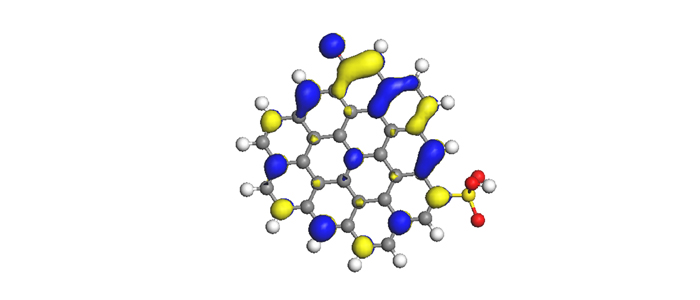News
3D printing bone tissue
Jun 28 2022
ACES researchers have created a ‘green’ light-switchable catalyst that could change the production process of common industrial chemicals, saving energy, time and money.

The ability to control a catalyst is crucial to the control of a chemical reaction and the products produced.
Quantum dots called for
The light-activated acid catalyst developed comprises carbon quantum dots (nanoparticles) that can be precisely controlled simply by flicking on a light.
When the dots are struck by light their acidity increases, which boosts their function.
Take away the light source and the effect is reversed.
Solid gains
Being solid, the catalyst can be easily separated by filtration and reused again and again. It could also be immobilised on a surface for use in a flow-reactor.
This offers a great advantage over traditional catalysts, which, being liquid, can’t be removed easily from the chemical reactions, causing corrosion of equipment and energy losses.
Easy as flicking a switch
ACES Chief Investigator Professor Douglas MacFarlane said tailoring the use of the catalyst to suit industrial synthesis was relatively straightforward.
“Light from an LED for example could be shone onto the reaction vessel,” he said.
“This could be in a flow system. In that case it would be onto the channel carrying the reactants and the light would cause the reaction to switch on.”
Professor MacFarlane said that in the flow system it would allow very thorough mixing of the reactants before initiation of the reaction. This would allow fine control of the catalyst and, in turn, the precise type and amount of product produced.
The team, whose work was published recently in Angewandte Communications, hopes to generate interest in creating other “light-sensitive, switchable and recyclable green photocatalysts for important industrial processes.”













